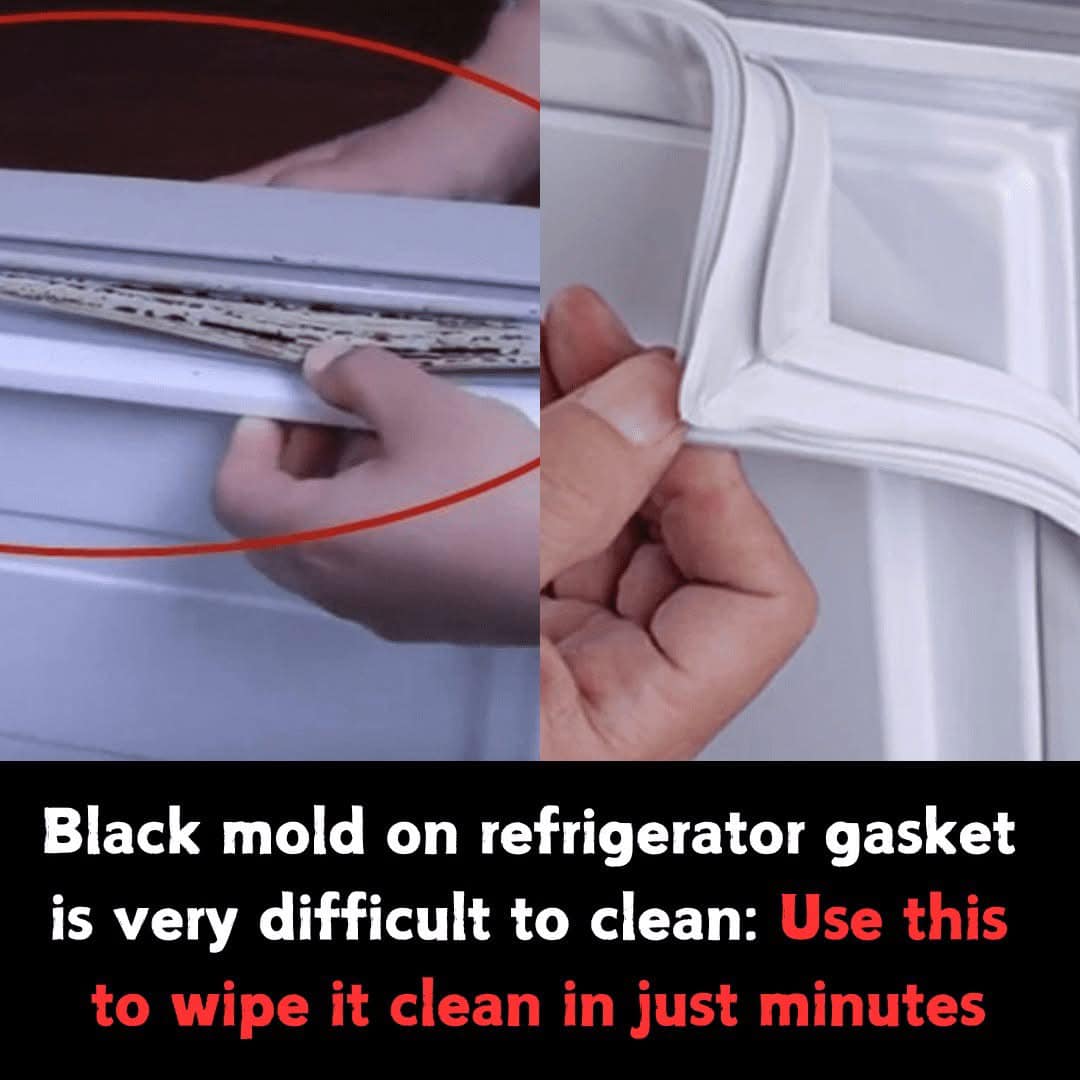The refrigerator is one of the most essential appliances in every household, playing a crucial role in preserving food, keeping beverages cold, and maintaining overall kitchen convenience. However, with regular use over time, the refrigerator’s rubber gasket—the flexible seal lining the door—can accumulate dirt, stubborn stains, and oily residue. If neglected for too long, these conditions can create a perfect breeding ground for black mold and bacteria. Not only does this look unsightly, but it can also compromise the refrigerator’s efficiency and even pose potential health risks.

Black mold is notoriously difficult to clean, especially in the narrow grooves and crevices of a refrigerator gasket. However, with the right cleaning techniques and tools, you can effectively remove mold and dirt without damaging or deforming the rubber seal. Below are two proven cleaning methods using common household ingredients: salt and alcohol.
Method 1: Clean with Salt Salt is an excellent natural cleaning agent known for its disinfecting and antibacterial properties. When combined with baking soda, vinegar, and white wine, it forms a powerful cleaning solution that can tackle even the most stubborn mold and grime.
Step 1: Start by preparing a bowl of salt. Salt acts as a natural disinfectant, while baking soda helps scrub away tough stains. Add a small amount of baking soda, vinegar, and white wine to the salt and mix well until fully dissolved.
Step 2: Take a clean cloth and soak it in the prepared solution. Ensure the cloth absorbs the mixture thoroughly.
Step 3: Wrap the soaked cloth around a chopstick. The chopstick serves as a precise tool for reaching the tight grooves and crevices of the refrigerator gasket. Carefully insert the wrapped chopstick into the gasket slots and gently scrub away dirt, mold, and bacteria.
Step 4: Once you’ve cleaned every corner of the gasket, use a dry cloth to wipe off any remaining moisture. Ensuring the gasket is completely dry will help prevent mold from returning.
This method is highly effective because the salt and vinegar combination disinfects while the chopstick allows for precision cleaning in tight spaces. Regularly using this technique will help keep your refrigerator gasket clean and mold-free.
Method 2: Use Alcohol or Wine Alcohol and wine are both known for their high disinfecting and cleaning properties. They not only kill mold spores but also evaporate quickly, leaving no residue behind. This makes them an ideal choice for cleaning delicate surfaces like refrigerator gaskets.
Step 1: Prepare a cleaning mixture using alcohol (isopropyl or ethanol) and water in a 1:1 ratio. This ensures effective cleaning without being overly harsh on the rubber material.
Step 2: Soak a piece of gauze in the alcohol solution and gently squeeze out any excess liquid.
Step 3: Take a stiff card, such as an old credit card or a plastic scraper, and wrap the damp gauze around it. The card will act as a tool for reaching the gasket’s tight crevices.
Step 4: Carefully slide the wrapped card along the grooves of the gasket, applying gentle pressure to ensure all mold, dirt, and bacteria are removed.
Step 5: After completing the cleaning process, wipe down the gasket with a dry cloth to ensure no moisture remains.
The alcohol method is particularly effective because it evaporates quickly and leaves the gasket dry, preventing future mold growth. Additionally, it eliminates any lingering odors caused by mold or mildew.
Maintenance Tips for Preventing Mold on Refrigerator Gaskets:
- Clean the gasket regularly, ideally once a month, to prevent mold and dirt buildup.
- Wipe away spills or moisture immediately to avoid creating damp conditions that encourage mold growth.
- Ensure the refrigerator door is fully closed after every use to prevent temperature fluctuations and condensation.
- Periodically inspect the gasket for cracks or signs of wear. If the gasket is damaged, replace it promptly to maintain the refrigerator’s efficiency.
By incorporating these maintenance habits, you can extend the lifespan of your refrigerator gasket and ensure a cleaner, healthier kitchen environment.
In conclusion, while black mold on refrigerator gaskets can be challenging to clean, it’s not an impossible task. With simple household ingredients like salt, baking soda, vinegar, and alcohol, you can effectively remove stubborn mold and bacteria without damaging the rubber seal. Regular cleaning and maintenance are key to preventing mold buildup and ensuring your refrigerator operates efficiently. These straightforward techniques not only save you time and effort but also contribute to a cleaner and healthier home. With consistent care, your refrigerator gasket will remain spotless, functional, and mold-free for years to come.





